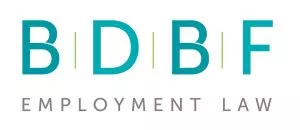If employers are proposing to make more than 20 people from a single establishment redundant within a 90-day period, they have to go through onerous collective consultation procedures. But when does the 90-day reference period start and end? In UQ v Marclean Technologies SLU, the ECJ ruled that employers have to look either side of an individual dismissal on a rolling basis to identify the relevant reference period. The reference period will be the period of 90 days which includes the individual dismissal, and which contains the greatest number of redundancy dismissals effected by the employer.
What does the law say?
Collective redundancy obligations originate from the EU Collective Redundancies Directive (the Directive). In the UK, the Trade Union and Labour Relations (Consolidation) Act 1992 (TULRCA) implements the Directive.
TULRCA provides that where an employer is "proposing" to dismiss 20 or more employees within a 90-day period it must consult collectively with representatives of the affected employees. Where 20 to 99 dismissals are proposed, the consultation period is 30 days and where 100+ dismissals are proposed it is 45 days. The employer must also notify the Secretary of State about the proposed dismissals using the HR1 form. A failure to do so is a criminal offence.
When calculating the numbers of proposed dismissals falling within the 90-day period there are some rules which favour employers.
- First, TULRCA provides that where collective consultation is already underway in respect of a first batch of redundancies, the numbers in the second batch can be viewed in isolation (assuming there is no evidence of bad faith on the part of the employer). For example, an employer begins collective consultation in respect of 30 redundancies on 1 March 2021 and two weeks later it proposes a further 10 redundancies. Although the employer is proposing to dismiss a total of 40 people as redundant within a 90-day period, it is excused from adding the 30 to the 10, meaning that collective consultation is not triggered for the 10. However, if the employer had not started the consultation process for the first batch, then the proposal to dismiss the 30 remains a "proposal" and should be added to the 10, meaning that collective consultation would apply to all 40 proposed dismissals.
- Second, in the case of Transport and General Workers' Union v Nationwide Haulage Ltd [1978] IRLR 143an Employment Tribunal said that employers do not need to look backwards to count earlier redundancy dismissals that have already taken effect, where further redundancy proposals emerge. The Tribunal said this would "demand the impossible" and that a "proposal" refers to what may happen in the future, not what had already happened.
This latest decision of the ECJ has upset the applecart by suggesting that employers should look either side of an individual dismissal and count all the redundancies occurring within a rolling reference period to assess whether collective consultation is triggered.
What happened in this case?
The facts of the case are simple. UQ worked for Marclean in Spain and was dismissed on 31 May 2018. In June 2018 he brought a claim arguing that his dismissal was one of a number of hidden collective redundancies. Between 31 May 2018 and 15 August 2018 (a 77-day period), a further 36 people left the business. Marclean had labelled the majority of these exits as voluntary resignations. UQ argued this was a sham and that they were really redundancies, meaning collective consultation should have taken place.
The Spanish Court went on to find that at least 30 of these workers had been made redundant. However, the Spanish Court was unsure whether the redundancies taking place after UQ's dismissal should be taken into account when deciding whether collective consultation had been triggered. It asked the ECJ to rule on whether the reference period ran:
- backwards from the date of dismissal;
- forwards from the date of dismissal; or
- as a rolling 90-day period spanning either side of the dismissal if necessary.
What was decided?
The ECJ noted that the purpose of the Directive was to strengthen worker protection in the event of collective redundancies and that only the third option complied with this purpose.
They ruled that the relevant reference period is the period of 90 days which includes the individual dismissal, and which contains the greatest number of redundancy dismissals effected by the employer - in other words a rolling assessment must be made. If the threshold number of redundancy dismissals is reached at any point across the 90-day reference period, collective consultation is triggered.
What does this mean for employers?
This decision has potentially onerous consequences for employers who choose to stagger waves of redundancies. It means that the employer must look either side of a proposed dismissal – on a rolling basis – to assess whether the threshold of 20 or more redundancy dismissals is reached at any point within that period. Although not explicit in the ruling, this appears to capture redundancy dismissals:
- that are at the proposal stage;
- for which collective consultation has already begun; and/or
- that have already taken effect.
As far as (ii) and (iii) are concerned, this represents a change to the established approach in the UK and calls into question whether TULRCA complies with the Directive.
This will require very careful analysis and planning by employers to ensure that they do not accidentally cross the threshold over a rolling 90-day period. Were this to happen, the employer would be tied to a collective consultation period of either 30 or 45 days (in addition to an individual period of consultation) before the first dismissal can take effect. This will extend the life of the employment relationship, potentially triggering entitlements to bonuses or share options that the employer may not have accounted for. The alternative is to dismiss in breach of the collective consultation obligations and face protective award claims of up to 90 days' gross actual pay per affected employee
Further, employers will need to ensure that the correct numbers of proposed redundancies are reflected on the HR1 form or risk committing a criminal offence.
UQ v Marclean Technologies SU (the judgment has not yet been published in English)
The content of this article is intended to provide a general guide to the subject matter. Specialist advice should be sought about your specific circumstances.

